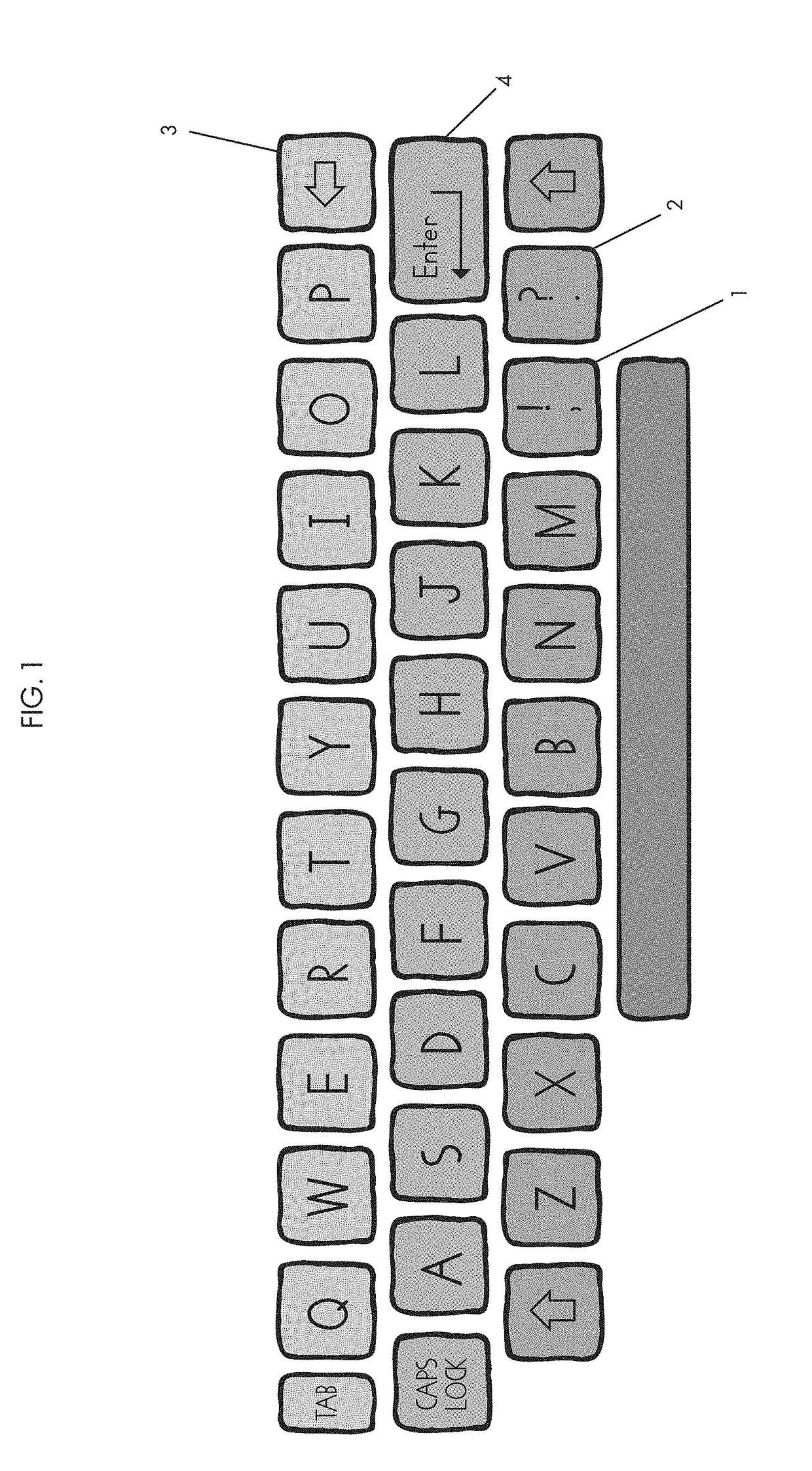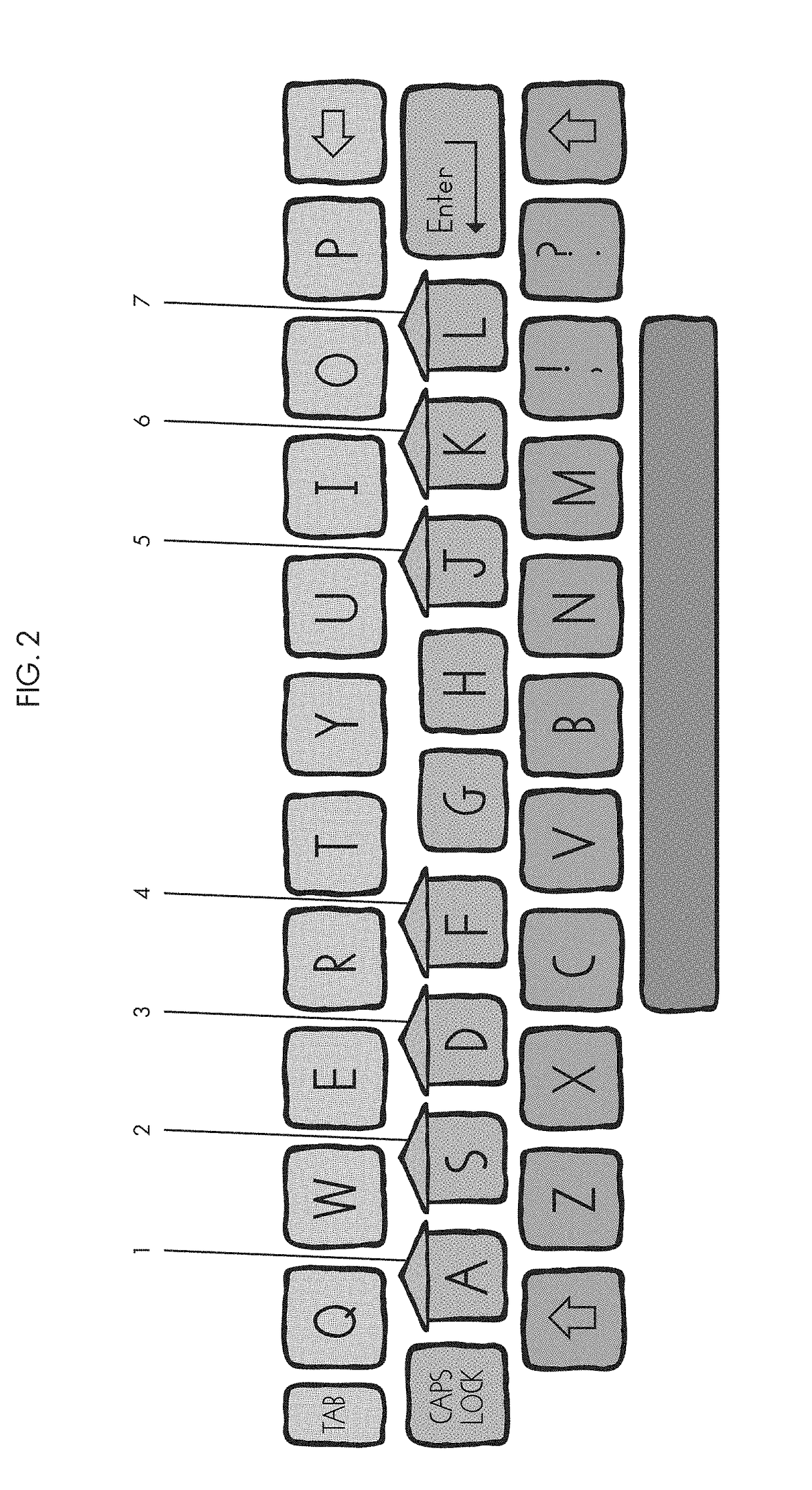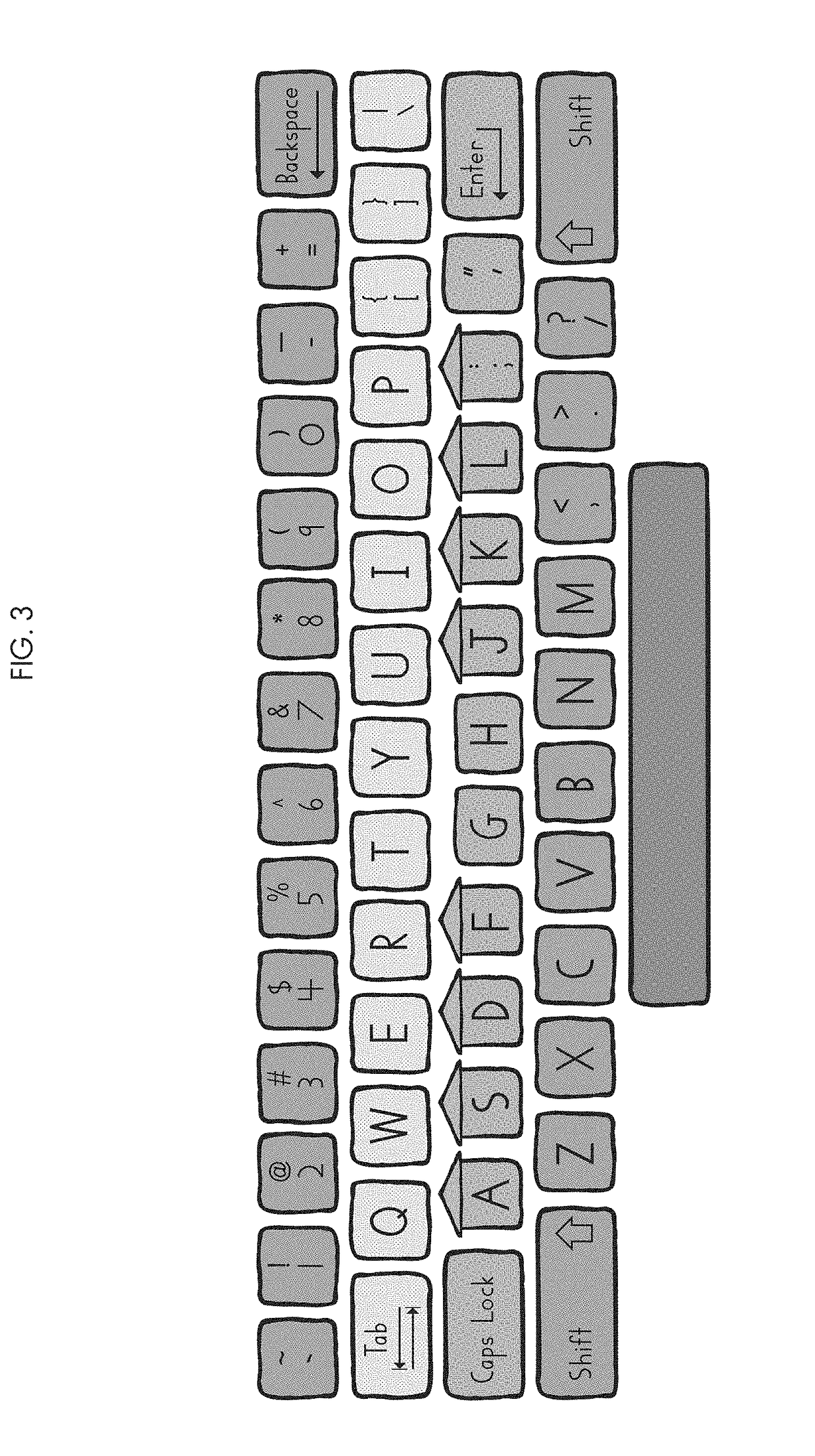[0025]A row-based philosophy pervades the KTMs and KTSs disclosed by the present invention because in contradistinction to the column-based approaches disclosed by the prior art, a row-based approach to making pre-keyboarding and keyboarding skills easy-to-teach and easy-to-learn is simpler and more effective. Fundamentally, the act of keyboarding is pressing keys after locating keys displaying symbols on the QWERTY layout. With a keyboarder's hands correctly placed on the Home Row, approximately ninety percent of Home Row positioning-based keystrokes require vertical finger movement up or down from the Home Row. Row-based and column-based approaches to KTM and KTS diverge fundamentally in how the aforementioned common four foundational skills are taught and learned. The visual chunking effect of a row-based approach uses color effectively to indicate movement. It guides the finger up or down through a change in color on the vertical axis for the finger that must move. It also simplifies the keyboard by creating only three groups or chunks of keys, if we consider only the alphabetic keys of the QWERTY layout. The row-based approach also makes teaching the Home Row—a foundational keyboarding skill—easy because all Home Row keys are displayed in one visual indicator, such as a color as in FIG. 1, or a line pattern as in FIG. 13.
[0028]Accordingly, the present invention utilizes a color-coded row-based KTM and KTS which results in simplifying the teaching and learning of the following keyboarding skills: (1) unilateral hand and finger skills (2) Home Row hand and finger positions (3) the relational position of symbol location in the SKAM (4) Home Row positioning-based keystroke spectrum of essential finger movements of the left and right hand. The color-coded row-based approach of the present invention, whose visual chunking effects creates a smaller plurality of relational objects than a row-based approach, limits its color-coding scheme to a reasonably memorizable, manageable array of rows that simplifies the teaching and learning of keyboarding skills. This Gestalt-oriented approach to visual chunking of the QWERTY layout also de-clutters the visual perceptual field of the QWERTY layout and avoids the manufactured visual complexity of and figure-ground confusion caused by the column-based color-coding schemes that may introduce up to ten colors in a keyboarders perceptual field of vision in any given column-based KTM.
[0030]The dynamic row-based approach of the present invention uses a visual coding scheme to meaningfully cue keystrokes and simplify the visual perceptual field of the QWERTY layout by visually chunking the spatially organized plurality of keys into a small set of manageable and reasonably memorizable units. Students engage with a visual coding scheme in interactive activities and gradually learn symbol location and keystrokes on the QWERTY layout through indirect memorization, since keystrokes and the relational position of symbols are cued in the present invention, rather than directly memorized by drills and repetition. This approach optimizes a student's visual-patial working memory as that student actively uses the visual coding scheme as a map of the QWERTY layout to learn where keys displaying specific symbols are located on the keyboard and learn which hand and finger they should use to press each key. The visual row-based approach cues those keystrokes with the map-like visual coding scheme of the present invention, enabling students to learn them through indirect memorization achieved through a curriculum of reinforcing instruction and dynamic content.
[0035]For example, a system for teaching a student keyboarding may provide a computing device with a physical keyboard and a display screen. The display screen may have an activity space in which a student engages an interactive activity that displays a target symbol. The interactive activity may employ a cueing system to prompt the student to press a physical key displaying the target symbol on the physical keyboard. A component of the cuing system, a virtual keyboard that employs a coding scheme of visual indicators to visually chunk the virtual keys into one column of uniquely identifiable virtual rows may be employed to assist the student in identifying the relational position of the physical key displaying the target symbol and learning the proper hand and finger to use to press the physical key. In the system, each visual indicator uniquely identifies one virtual row, and every virtual key in each virtual row is additionally marked by a unique symbol.
[0036]For example, a system for teaching a student keyboarding may provide a computing device with a touch-sensitive display screen. The touch-sensitive display screen may have a virtual keyboard and an activity space. A student may engage an interactive activity that displays a target symbol in the activity space. The interactive activity may also employ a cueing system to prompt the student to press a virtual key displaying the target symbol on the virtual keyboard. A component of the cuing system, the virtual keyboard may employ a coding scheme of visual indicators to visually chunk the virtual keys into one column of uniquely identifiable virtual rows. The cuing system assists the student in identifying the relational position of the virtual key displaying the target symbol and learning the proper hand and finger to use to press the virtual key. In the system, each visual indicator uniquely identifies one virtual row, and every virtual key in each virtual row is additionally marked by a unique symbol.
[0039]Another system for teaching a student keyboarding may display selected Home Row keys in a design that resembles a house to ease a student's visual discrimination of the Home Row keys from the other keys on the keyboard.
 Login to View More
Login to View More  Login to View More
Login to View More 


